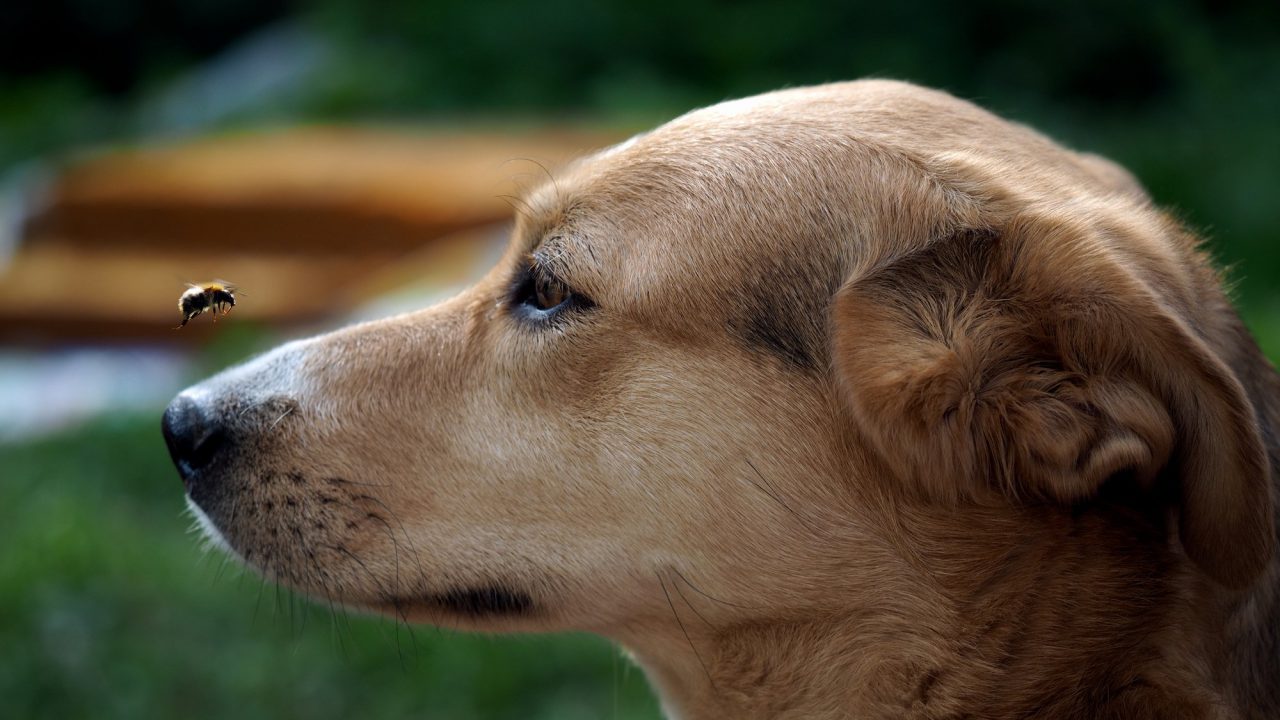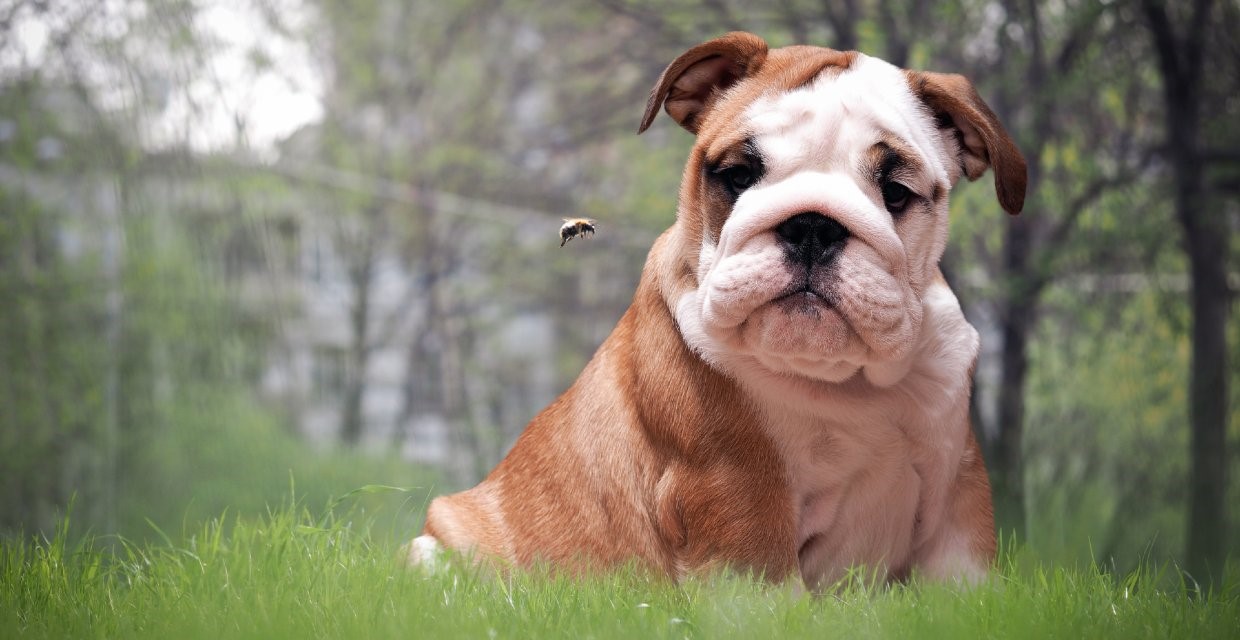Dogs are curious by nature and can often get their noses into some odd places! Resisting a good sniff in the garden is a tough one to just mosey on by, but in some cases your dog may find themselves yelping with a very painful bee sting.
What should I do if I suspect my dog has been stung by a bee?
- Stay Calm. The first thing to remember is to stay calm. Dogs are susceptible to mirroring the emotions of their owners, so remaining calm will help make a potentially painful and comfortable situation for your furry friend much easier. Most dogs fully recover from a bee sting within a day or so.
- Identify what sort of sting your dog has acquired. Not all stings are the same; bees have a barbed stinger that detaches and remains in the victim’s skin, whilst wasps retain their stingers and can sting multiple times. In the case of a bee sting, for several minutes after the sting occurs, the venom sac on the stinger can continue to pulsate, injecting venom into the area. Remove the stinger as soon as possible by flicking or scraping it out with a flat surface(such as a credit card) – not squeezing or pinching it out as this can cause even more issues.
- Assess signs of an allergic reaction. Lucky dogs will experience milder symptoms which usual go away within a day or so, including: redness, mild swelling, heat and potentially itching at the sting site. Signs of a potentially serious reaction usually develop within 10-30 minutes and include:
- Panting
- Drooling
- Difficulty breathing
- Yelping
- Licking their paws or a particular spot
- Swelling
- Vomiting
- Redness
- Fatigue
- Changes in character
4. Contact your Vet for immediate help. If you notice any of the above symptoms in your dog after a bee sting, we recommend contacting your local Vet as soon as possible. Depending on your dog’s condition, severe cases may require hospitalization or medications such as antihistamines, steroids and epinephrine.

Practical tips to avoid a bee sting
The most common areas dogs tend to get stung are their paw pads, nose, face and mouth, so it’s best to always be engaged and keeping an eye on your dog when you’re out and about. Follow these handy tips to avoid a bee string catastrophe for your furry friend:
- Practice recall
- Always keep an eye on your dog while on outdoor adventures
- Avoid letting your dog wander into gardens or bushes where bees are most active
- Keep antihistamines such as Benadryl or Diphenhydramine handy in the first aid kit

